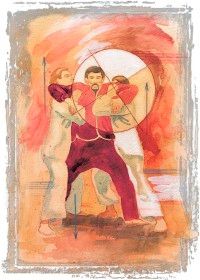Key Takeaways
- Chi is a vital force in Taoism that animates matter and sustains life, not commonly accepted in Western traditions but widely understood in Eastern cultures.
- Chi can be harnessed and manipulated by trained individuals known as chi kung (or qi gong) masters, who can emit this energy from their bodies for various purposes.
- Cultivating chi through practices like chi kung can improve health, prevent disease, and potentially prolong life, as seen in the case of legendary figures like Li Ching-Yuen.
Chi is a primal substance that animates the universe in Taoism, a mysterious force introduced to us by ancient Chinese myths and legends that have also told us about the Tai Chi and about Tao. Chi is the force that sets the world and everything in it into motion. Chi is also the force that sustains all things once they are created.
The Idea of Chi
The Taoist concept of chi is not easily accepted by Westerners. It is not a concept that appears in Western mainstream religions or philosophies. Similarly, Western medical and scientific traditions often don't acknowledge chi or have any place for it in their theories.
Advertisement
In China and beyond, however, the Taoist concept of chi is very familiar, even commonplace. Everyone, from politicians to school children, understands it. The notion of chi and its applications are as much a part of Chinese life and outlook as are the ideas of muscle tone and physical fitness in Western life.
Easterners believe chi to be the life energy contained within matter. In experiments conducted in the 1960s, nuclear physicists in China came to accept the notion that chi is actually a low-frequency, highly concentrated form of infrared radiation.
In recent decades, experiments in China have been conducted on this special type of energy. Some researchers have come to believe, just as the legends tell us, that certain people may be able to learn to emit this form of energy from their bodies. Known as chi kung masters, these highly trained individuals often devote their lives to developing this subtle energy.
As the Taoist concept of chi crossed over into the West in recent years, a Western word was coined to describe it. Since chi has a number of properties that seem similar to those of electrical energy, it is sometimes called bio-energy.
This describes the living energy that is native to life rather than to the inanimate forces of nature such as water power or lightning. Knowledge related to bio-energy is called bio-information.
Learn more about chi as the life force and its appearance in Western ideas on the links that follow.
To learn more about chi and Taoism, see:
Advertisement

